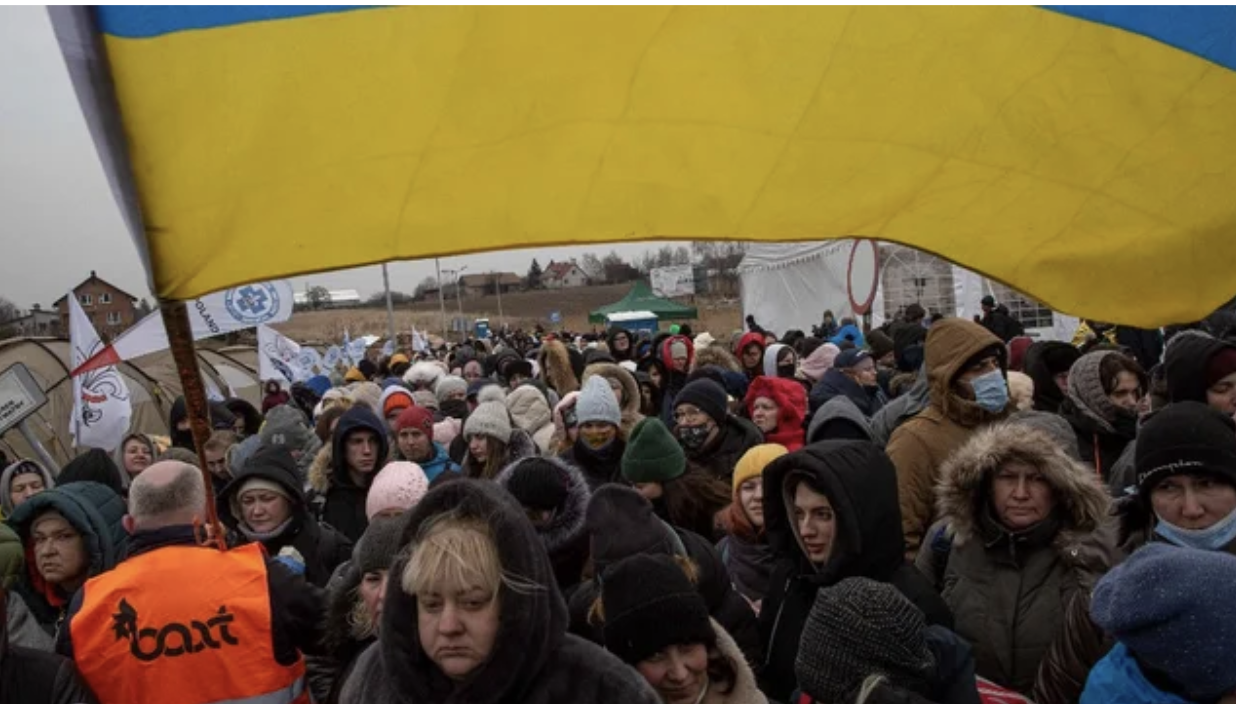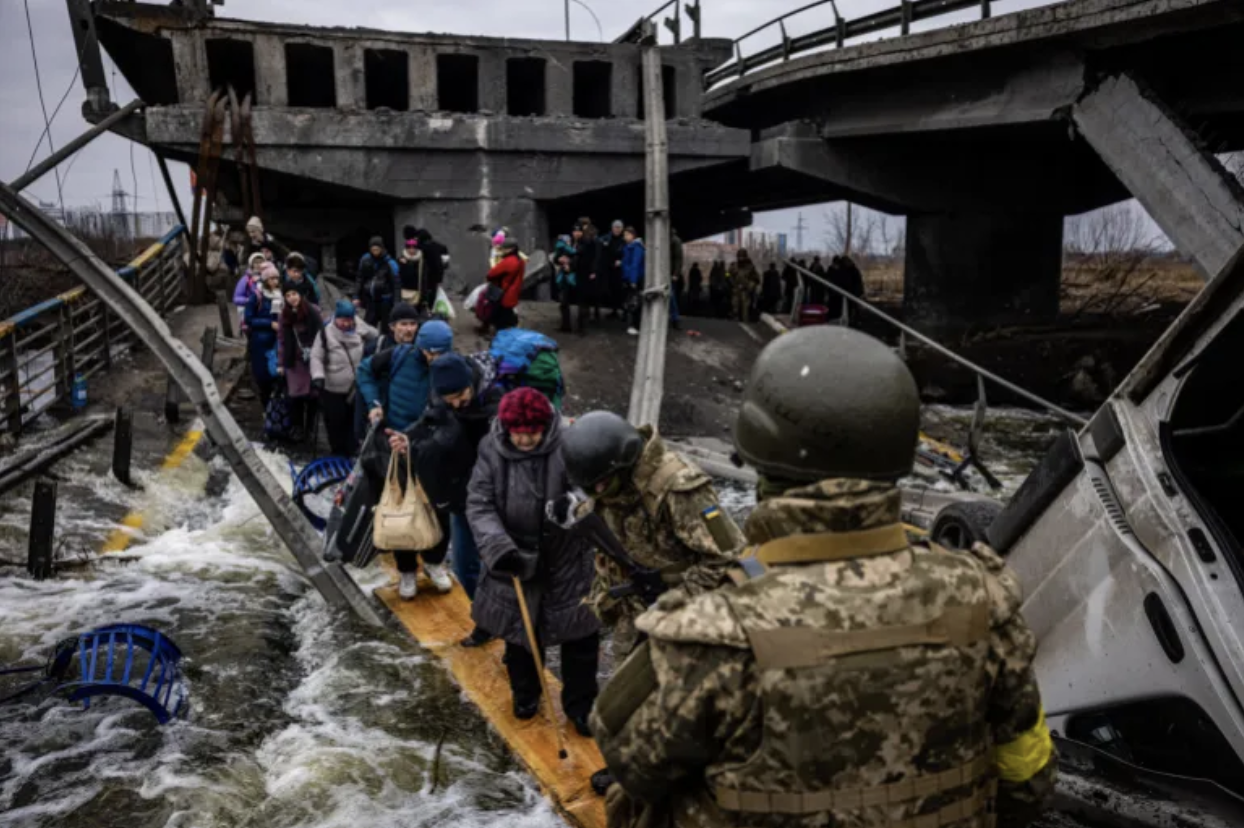Two Weeks into the War: The Civilian Toll in Ukraine
More than two million refugees have fled Ukraine as the Russian invasion reaches its two week mark. Photo: Associated Press/Visar Kryeziu, via The Hill.
It has been two weeks since the Russian invasion of Ukraine began. While many experts and close observers claim that Russia is failing to meet its targets and showing signs of weakness, the civilian population nevertheless suffers at the hands of the brutal conflict occurring around them. According to John Kirby, the Pentagon’s Chief Spokesman, Russia’s slowed progress on the ground has prompted an increased use of artillery, rockets, and other long-range weapons in urban areas, a decision which increased the number of civilian casualties.
The UN High Commissioner for Human Rights reported 1,424 civilian casualties as of Wednesday, March 9, including at least 516 people killed and 908 wounded, and warned that the actual numbers could be much higher. Russia denied targeting civilians, but an advisor to the Ukrainian president claims that over 200 schools, 34 hospitals, and more than 1,500 residential buildings were destroyed in the two weeks since the war broke out.
On Wednesday, March 9, a Russian airstrike destroyed a maternity hospital in the port city of Mariupol, killing three people and injuring at least 17 others. Ukrainian authorities reported that a child was among those killed, and images of pregnant women and doctors moving to escape the rubble circulated the news. Western leaders expressed their horror at the attack, and Ukrainian President Volodymyr Zelenskyy condemned Russian targeting of civilians, saying “What kind of country is this, the Russian Federation, which is afraid of hospitals, afraid of maternity hospitals, and destroys them?” Russian Minister of Foreign Affairs Sergey Lavrov alleged that the hospital served as a base for radical groups and the Ukrainian Azov Battalion, putting the blame on the West for supplying them with “deadly weapons.”
It is estimated that more than two million refugees have fled Ukraine, among which there were an estimated one million children. According to UNICEF Executive Director Catherine Russell, at least 37 children were killed and 50 injured in the conflict thus far. Men between the ages of 18 and 60 are forbidden from leaving Ukraine under martial law, and many are left to join the volunteers in defending their country while their families attempt to flee.
Reports of Russian soldiers targeting civilians began to surface as refugees who claim to have witnessed such attacks unfolding arrived in Poland. Their first-hand testimonies will prove vital to the effort to hold Russia accountable for attacks against civilians and civilian infrastructure.
There have been three consecutive failed attempts to establish humanitarian corridors through which to evacuate civilians out of Mariupol due to a string of violated ceasefire agreements. The latest attempt came on Tuesday, March 8, when a convoy of buses bringing humanitarian aid and intending to take at least 200,000 people out of the city had to turn around due to what Ukrainian officials described as heavy fighting along the established corridor.
Civilian evacuation efforts have proven tough across different parts of Ukraine due to the destruction caused by the conflict and continuous shelling by Russia. Photo: Dimitar Dilkoff/AFP, via Al Jazeera
As of March 10, approximately 400,000 people have been evacuated from conflict areas according to Ukrainian Interior Minister Denys Monastyrsky. Earlier in the week, Moscow announced the opening of daily safe corridors for those wishing to cross into Russia and neighboring Belarus, a move deemed immoral by Kyiv. Evacuations of civilians are expected to continue into the weekend, but the previous breaches in agreements regarding ceasefires and humanitarian corridors complicates the process.
Those remaining in besieged cities across Ukraine are faced with shortages of food, water, medicine, and electricity. Despite the destruction of the war, many Ukrainians who have stayed behind refuse to give up the fight for their country’s sovereignty. Mykola Matulevskiy, a 64-year-old Ukrainian retiree who is fighting alongside his son, spoke about his decision: “It’s not possible to have it in another way because it’s our motherland. We must defend our motherland first of all.”


